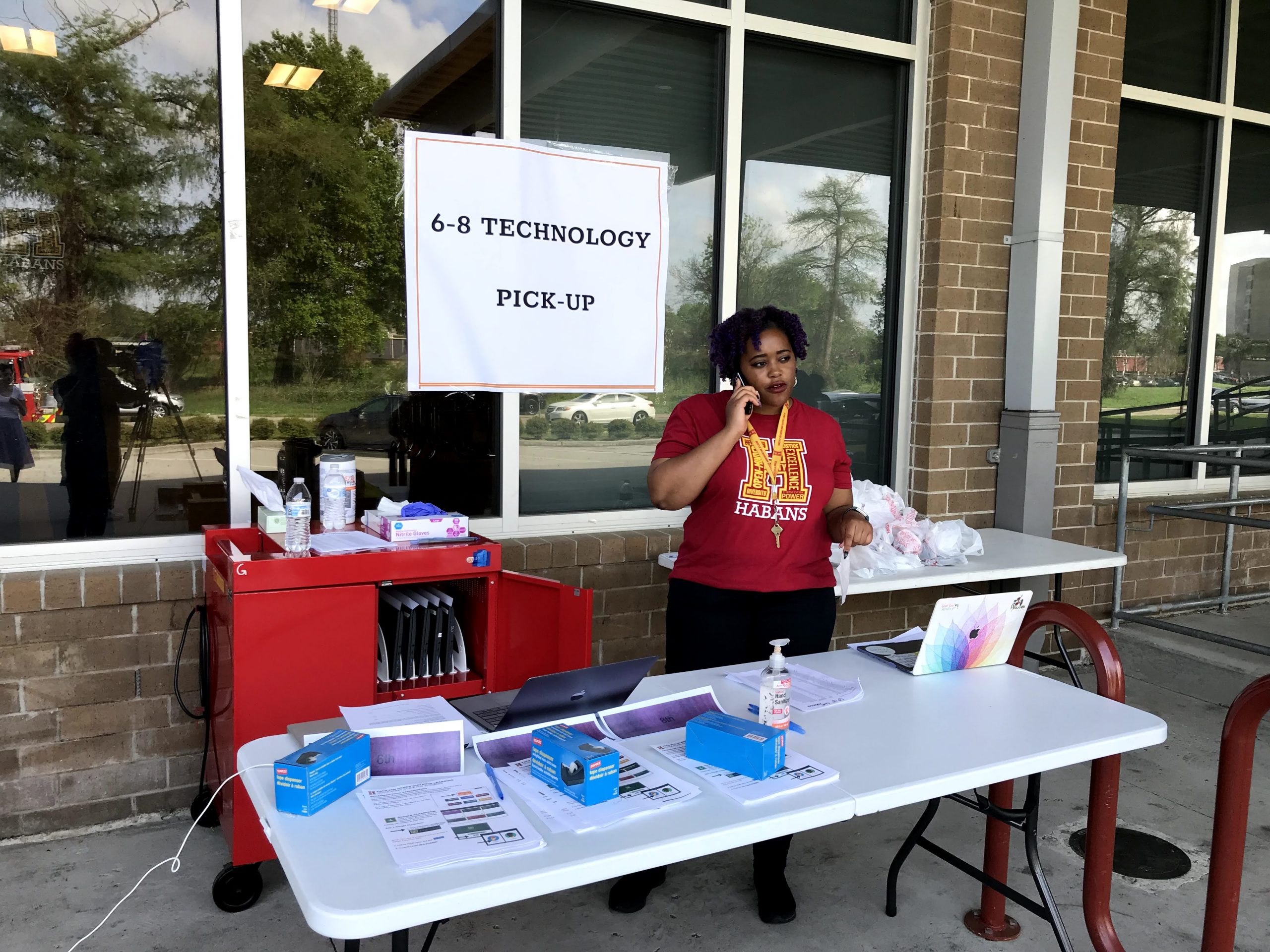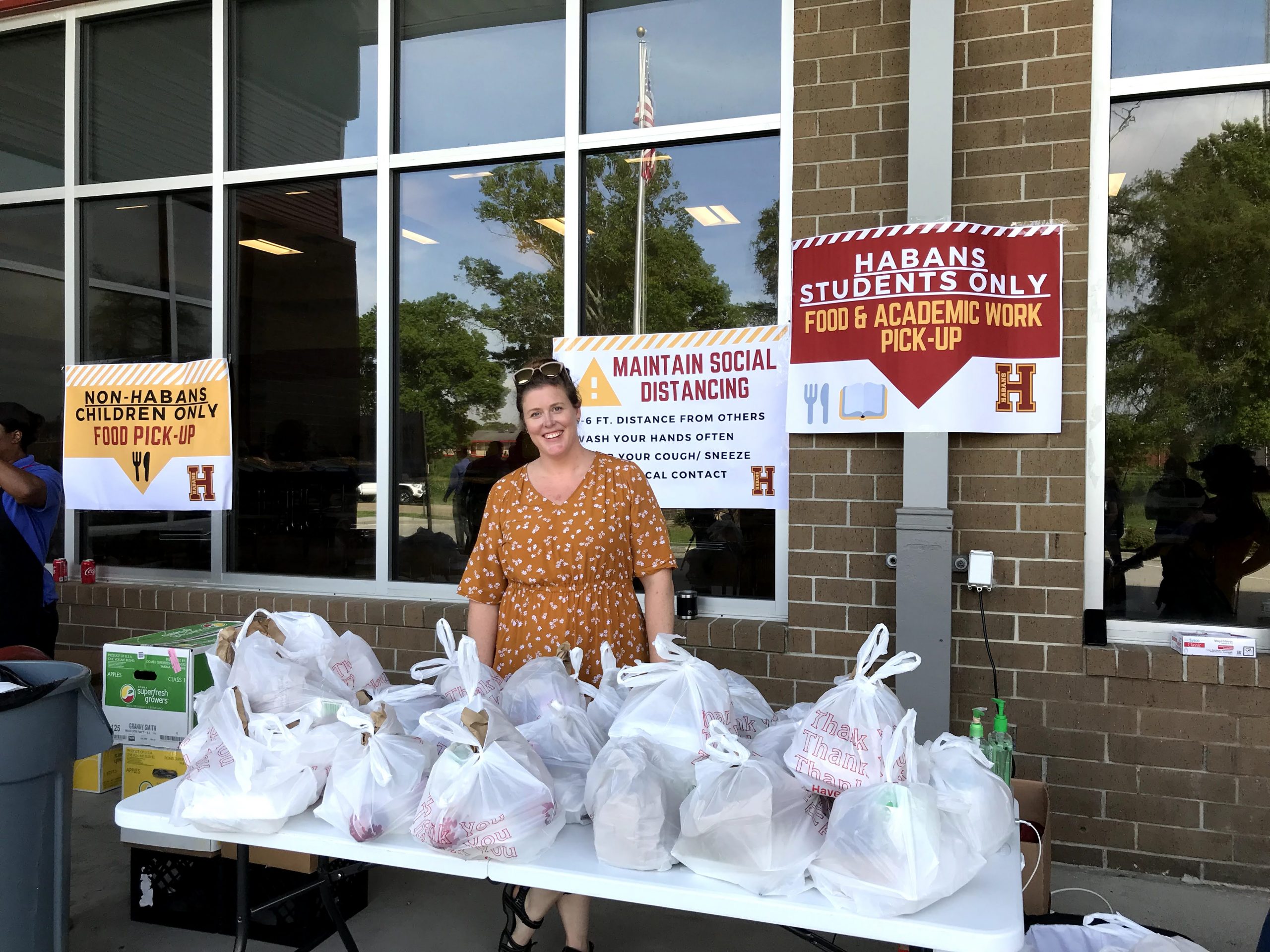86 Schools, One Goal: How Dozens of New Orleans Educators With Unique Academic Models & Layouts Are Teaming Up to Reopen This Fall
By Beth Hawkins | June 24, 2020
The abrupt COVID-related closing of New Orleans schools was a study in agility.
Within hours after Louisiana Gov. John Bel Edwards’s announcement of the shutdown on Friday, March 13, some schools had a week’s worth of paper lessons ready to send home. By the following Monday, seven were distributing bags of meals outdoors. By Wednesday, the number had risen to 44. Within a week, 97 percent were providing students with academic instruction — a rate three times as high as the national average, even three months into the pandemic.
For a system of independent schools, though, reopening turns out to be a much more delicate dance. In most of the country, school leaders are using guidance from state and district officials on everything from installing portable handwashing stations to helping students with learning losses catch up in the coming academic year. But New Orleans’s 86 public schools are charters, and while 78 are overseen by NOLA Public Schools, the district largely functions as the schools’ charter authorizer. Meaning it holds the schools accountable for performance and provides some services but doesn’t give them instructions on how to operate.
This autonomy has made the New Orleans district a much-discussed model of innovation. But it has a downside: a lack of coordination that has made it hard for families to figure out and navigate things like enrollment, special education services and transportation. In recent years, the leaders of many of the schools have come together to troubleshoot issues arising from that freedom, ranging from making sure enrollment, school discipline and funding are fair to establishing a common calendar.
Now, they are stepping up their cooperation, with frequent meetings to stake out common ground. Among their goals: to ensure that students from very different schools don’t have uneven access to services when in-person classes resume.

For example, students enrolled in schools that have large, modern buildings with space for social distancing and small-group instruction likely will be able to attend school in person for more time than their peers. So one key agreement arrived at in those conversations set a baseline for the amount of time students will spend in the classroom. Given the possibilities for staggering attendance, the leaders eventually concluded, all schools should offer students at least 40 percent of their customary time in school in person, and are free to do more for some children.
Kids in early grades particularly need to be near their teachers, while some high schools want the most contact with ninth-graders, as they make the daunting transition from middle school, and with 12th-graders firming up postsecondary plans. A school could, then, offer alternate days Monday through Thursday and reserve Fridays for children with higher needs.
Some want smaller, social-distancing groups of students to stay together throughout the year, so that if someone becomes ill, the people in just that class can self-isolate, rather than closing the entire school. This likely would require staffing decisions such as whether to place a second adult in a class, and, if so, whether that would be a teacher of special education or English learners or a paraprofessional.
Pre-pandemic experience with some of these issues has taught the school leaders that the impact of any individual school’s disadvantages has the potential to be felt systemwide. “Legally, we could do our own plans for reopening,” says Kate Mehok, co-founder and CEO of Crescent City Schools, which operates three pre-K-8 schools that are among the city’s top performers. “But you’re not going to see 82 plans, because it’s not helpful to our families or to our city.”
New Orleans educators are aware they play a linchpin role in reopening, she says. The city can’t jump-start its economy until people can go back to work. That can’t happen until at least younger students — who also are most likely to struggle with literacy and other basic academic skills taught online — can attend school in person.
“If my elementary school allows students to come back and others don’t, we’re not doing anyone any favors, because people have to figure out child care, etc.,” says Mehok. “Our city needs us to be united to bring back the economy.”
Minimizing health risks a top concern
Throughout the country, governors have issued executive orders shutting down in-person schooling and state departments of education have provided extensive guidance on how districts should comply with those orders. Districts then instruct schools on next steps. Legally constituted as districts, charter schools and charter school networks interpret state guidance for themselves, along with any local executive orders.
Like all schools, New Orleans’s charters must respect those executive orders, which spell out things like what kind of social distancing is required and how many people can be in an enclosed space at one time. But because school buildings range from cramped and needing repair to spacious and modern, compliance with health requirements will vary. And figuring out which students might be able to come back in person and for how much of the typical school week is contingent on the size and configuration of the buildings and myriad other factors.
In late May, NOLA Public Schools appointed a reopening task force that is expected to meet throughout the summer. Unlike similar state-level panels, the committee has not opened its meetings to the public.
In late May and early June, the district asked city residents to participate in an online survey about their experiences with distance learning during the initial COVID-19 shutdown and their feelings about reopening schools for the coming academic year. Two-thirds of the 7,227 responses gathered were from parents. The rest were submitted by educators, students and community members.
Eighty percent of parents and 82 percent of educators said minimizing health risks was a top priority for reopening. More than half of parents want their school to offer a distance-learning option next year, while 64 percent said they would be able to send their children to school on alternating days.
More than 4 in 5 parents want summaries of what their children are supposed to be learning in order to achieve at grade level, which tasks to prioritize each day and someone to help when questions arise. Almost two-thirds of educators want mental health resources before schools reopen.
New Orleans school leaders told The 74 the district has been responsive to their requests for support, swinging into action as the shutdown was being announced to help provide food and to tap funds left over from the Hurricane Katrina recovery to buy technology for schools to distribute. They expect the district will help to interpret expectations laid out by state and city officials.
But district leaders in New Orleans must stop short of the steps a traditional district would take in planning a reopening, says Karega Rausch, acting president and CEO of the National Association of Charter School Authorizers. The technology and food resources the district delivered, and the materials and training the state of Louisiana has offered to pay for, are good examples of the things charter school authorizers, be they districts or stand-alone organizations, should try to provide.
But major elements of all schools’ reopening plans — staffing and the use of time and resources — fall under charter schools’ legally protected autonomy. Each can make its own decisions, but each is also likely to feel the impact of choices made by neighboring schools.
“Authorizers should be in a place where they are asking schools questions like, ‘If you have staff who are not comfortable coming back, how are you going to deal with that?’” says Rausch. “There is a fine line between supporting and laying out guidance. This is trickier than in typical times.”
Kaitlin Karpinski is the leader of Rooted School, whose students are expected to leave high school with a diploma and the qualifications to get a good job in New Orleans’s “Silicon Bayou” — a growing technology sector that has attracted employers priced out of Silicon Valley and elsewhere.
“I’m doing 300 percent of the planning I usually do,” she says, working through four scenarios for the reopening of school in August: a fully virtual resumption of classes; a hybrid schedule with half of students in the building two days a week; full in-person attendance; and the possibility that school will have to close and reopen again.
In the immediate aftermath of the shutdown, the school leaders’ calls were focused on making sure families’ basic needs were met and that district officials knew what that entailed. Several weeks ago, when the topic shifted to ways in which schools could align their plans, things started to get complicated, Karpinski says.
“The tensions that came up are that buildings are radically different, models are radically different,” she says. “It’s very difficult to achieve alignment when there are so many variables.” In addition to the physical constraints imposed by social distancing, transportation needs and the size of classrooms, some schools’ academic models are better suited to adaptation for remote instruction than others.
‘Let’s not do a one-time crisis plan’
The issue behind the push for uniformity is equity. If one school can accommodate more students for a longer period of time, for example, families with children in schools that can’t offer as much in-person schooling won’t get equitable access to learning. Rooted was already technology-rich, so it’s likely to feel less of an impact from distance learning than schools where, pre-pandemic, far less instruction was done online.
Such imbalances have implications for schools as well as students, Karpinski says: “One question that came up was, ‘What if someone can offer four days [of in-person instruction] and I can only offer two? What does that do to my enrollment?’” Because state funding follows pupils when they transfer, a school that can’t support its families as well as its neighbors can quickly end up awash in red ink.
One possibility that might work well for Rooted, because of its career-readiness focus, would be to have students complete internships — albeit from home — on days when they are not scheduled to be in the building. But here, too, there is a challenge: Schools do not yet know whether they will be excused from the requirement that students be in attendance for a certain number of minutes during the upcoming academic year, and if they are not, whether there will be a mechanism for accounting for kids who either finish their remote work quickly or are engaged in nonacademic, productive assignments.
“If ‘seat time’” — educators’ shorthand for these minutes — “went away as a measure, it would be game-changing,” Karpinski says.
A waiver granting flexibility on the number of instructional minutes schools are required to provide would have to come from the state, which issued one for the last academic year because of this spring’s shutdowns. Further guidance was expected the week of June 22, though no decision on whether in-person school will be allowed is likely until July.

In early May, the Louisiana Department of Education released an extensive set of recommendations, including how to diagnose learning gaps that opened or widened during the shutdown and strategies for closing them, how to institute trauma-informed approaches when students come back and how to toggle back and forth from in-person to remote instruction. Districts and charter schools were invited to apply for grants paid for under the federal CARES Act to fund training or materials needed to implement those Strong Start 2020 strategies.
For several years, Louisiana has identified priorities for its schools — most notably, high-quality curriculum and good teacher training — and created funding streams to encourage districts and charter schools to adopt these and other evidence-based strategies. This made it easier for state officials to focus their response as the closures loomed, says Hannah Dietsch, the Education Department’s assistant superintendent and chief strategy officer.
“When the pandemic hit, we said, let’s not do a one-time crisis plan,” she says. “Let’s look at how we can build on the priorities we’ve already got.” The starting point: Schools should have a re-entry plan for each student, based on data showing where they are academically.
Because the state had already vetted a list of curriculum providers for quality and paid for a majority of districts to begin using their materials, it was relatively easy to go to those organizations and ask for help modifying them for use in distance learning. By mid-June, the department had paid for 178 districts to adopt the digital resources created to go along with the curriculum they already had, and to train teachers to use it.
The state also pushed curriculum providers to supply materials for students who come back to school missing skills or knowledge, so that teachers have the remediation tools they need on the spot. And the department offered referrals to outside partners for schools and districts needing help in strategizing how to use teachers and other human capital.
The cross-pollination generated in conversations about how to use the state’s resources and how to most safely reopen has been invaluable, Crescent City Schools’ Mehok says. Without colleagues to troubleshoot and brainstorm with, there’s no way a system of independent schools could develop all the contingency plans the moment requires.
“Every time I talk to another school leader, they tell me three things I haven’t thought of,” she says. “And I say, ‘Oh, that’s great, let me bring that up in my network.’”
Lead image: Crescent City Schools staff distributing meals at the start of the pandemic-related school shutdown. (Shoshana Bochner)
Get stories like these delivered straight to your inbox. Sign up for The 74 Newsletter

